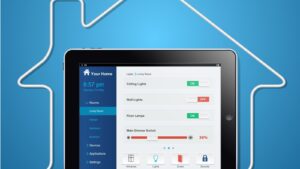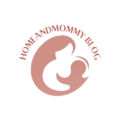In the fast-paced world of healthcare, efficiency and accuracy are paramount. That’s where care home management software steps in, revolutionizing the way care homes operate. This tech innovation isn’t just a trend; it’s a necessity that’s reshaping the landscape of elderly care.
From scheduling to medication management, these systems streamline tasks, reducing human error while improving the quality of care. But what exactly is care home management software, and how is it making a difference in the day-to-day operations of a care home? Let’s delve into the world of digital healthcare to find out.
Care Home Management Software
In the dynamic landscape of care home management, organizations recognize the crucial role software solutions play. These advanced tools offer multiple functionalities, streamlining care home activities and enhancing overall operational efficiency. This section delves into key features and benefits of implementing care home management software.
Key Features
Care home management software boasts a variety of features that cater to the unique requirements of the healthcare industry.

- Scheduling and Staff Management: The software enables easy scheduling for staff and patients, contributing to efficient workforce management.
- Medication Management: The software ensures meticulous tracking of medication schedules, reducing medication errors.
- Billing and Invoice Management: This tool simplifies billing processes, creating an organized financial system.
- Electronic Health Records Management: With this feature, healthcare records preservation and retrieval become effortless tasks.
- Communication Tools: These built-in tools foster effective communication among staff, patients, and their families.
Choosing the Right Care Home Management Software
In the selection of proper care home management software, it’s critical to give emphasis on certain essential factors. Evaluating these elements assists one in procuring a system that promotes efficiency and implements high standard care.
Factors to Consider

- Ease of Use: The chosen software must bring no complexity, allowing employees to adapt swiftly.
- Customizability: The software should offer flexibility, adjusting to the unique requirements of each care home.
- Comprehensive Features: The presence of vital amenities such as medication management, scheduling, e-Health records, and billing is compulsory.
- Technical Support: Post-purchase assistance ensures that the software functionality remains uninterrupted and efficient.
- Regulatory Compliance: The software must align with the applicable health and safety regulations to avoid infringement and fines.
- Cost Effectiveness: Assessing one-time purchasing costs, update charges, and maintenance expenses gives a clear picture of affordability.
- Data Security: It’s paramount that the software provides top-notch protection to patient and care home data.
Implementation Strategies
Effective implementation of care home management software involves two essential processes—training staff on the new software and integrating it with existing systems. Smooth execution of these processes eliminates operational inefficiencies, enhances care delivery, and maximizes the return on investment.
Training Staff on New Software
 One essential strategy during software implementation is the training of staff. Successful adoption of the software relies heavily on how comfortable and proficient the staff is with its features and functionalities. Organizations usually involve external trainers, online tutorials, or software provider’s in-house experts to conduct thorough training sessions. Lessons typically range from familiarizing staff with the interface, teaching them how to use prominent features like scheduling, medication tracking, and staff management, to troubleshooting common problems. Case studies of Eldermark Software or MatrixCare can give insights into optimized staff training models.
One essential strategy during software implementation is the training of staff. Successful adoption of the software relies heavily on how comfortable and proficient the staff is with its features and functionalities. Organizations usually involve external trainers, online tutorials, or software provider’s in-house experts to conduct thorough training sessions. Lessons typically range from familiarizing staff with the interface, teaching them how to use prominent features like scheduling, medication tracking, and staff management, to troubleshooting common problems. Case studies of Eldermark Software or MatrixCare can give insights into optimized staff training models.
Integration with Existing Systems
Another key implementation strategy is the software’s integration with existing systems. A seamless fusion with systems already in use, such as medical devices, finance software, or human resources systems, multiplies its utility manyfold. Integration minimizes data redundancy and ensures the smooth exchange of information between different software components. Successful integration demands significant technical expertise and careful preparation. Companies like ECP and Real Time Medical Systems offer integration services as part of their software package, aiming to ease this process for care homes. Emphasizing integrated software solutions, for example, ALIS, benefits care homes by limiting the potential for user errors and enhancing information flow, ensuring optimal use of resources.



